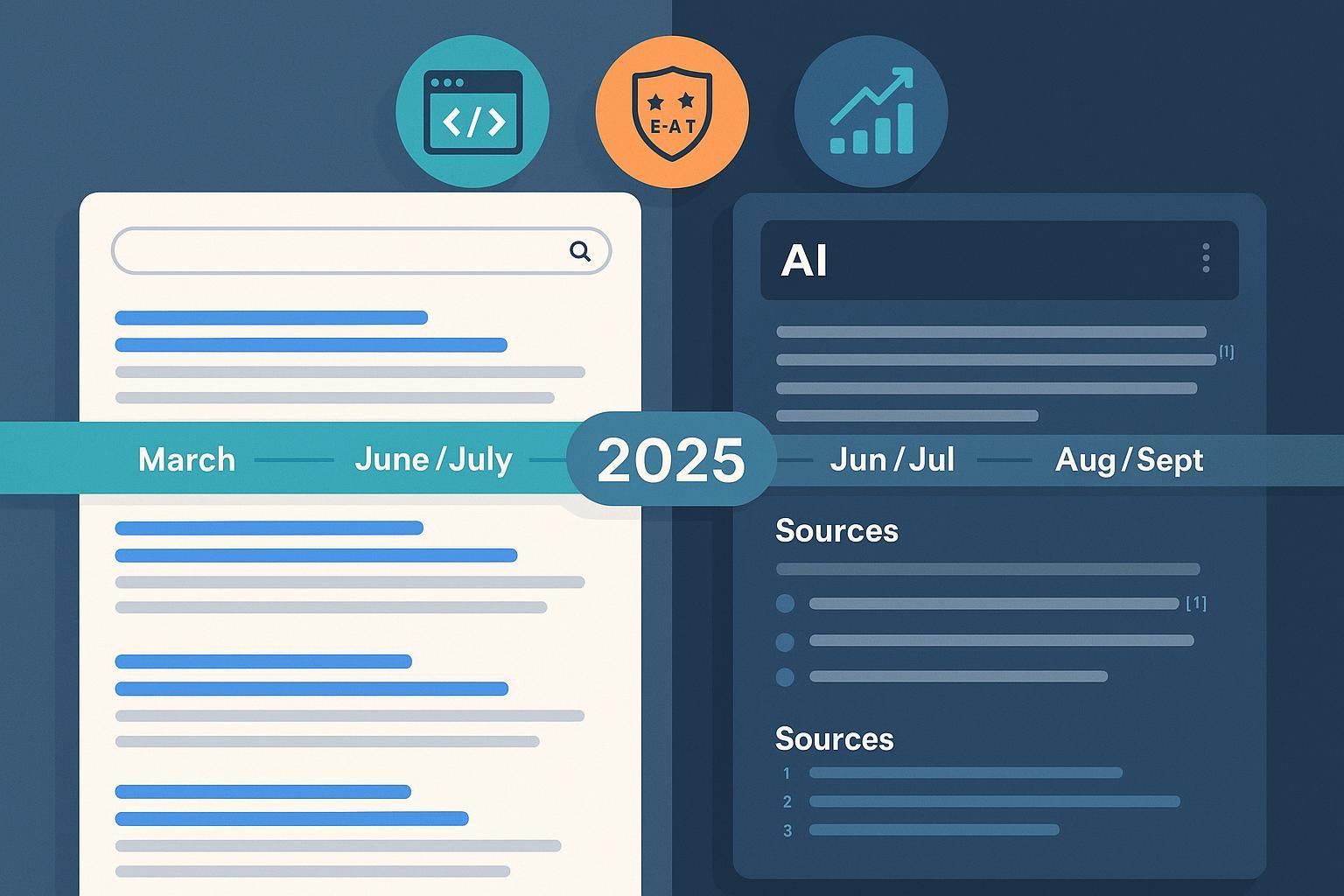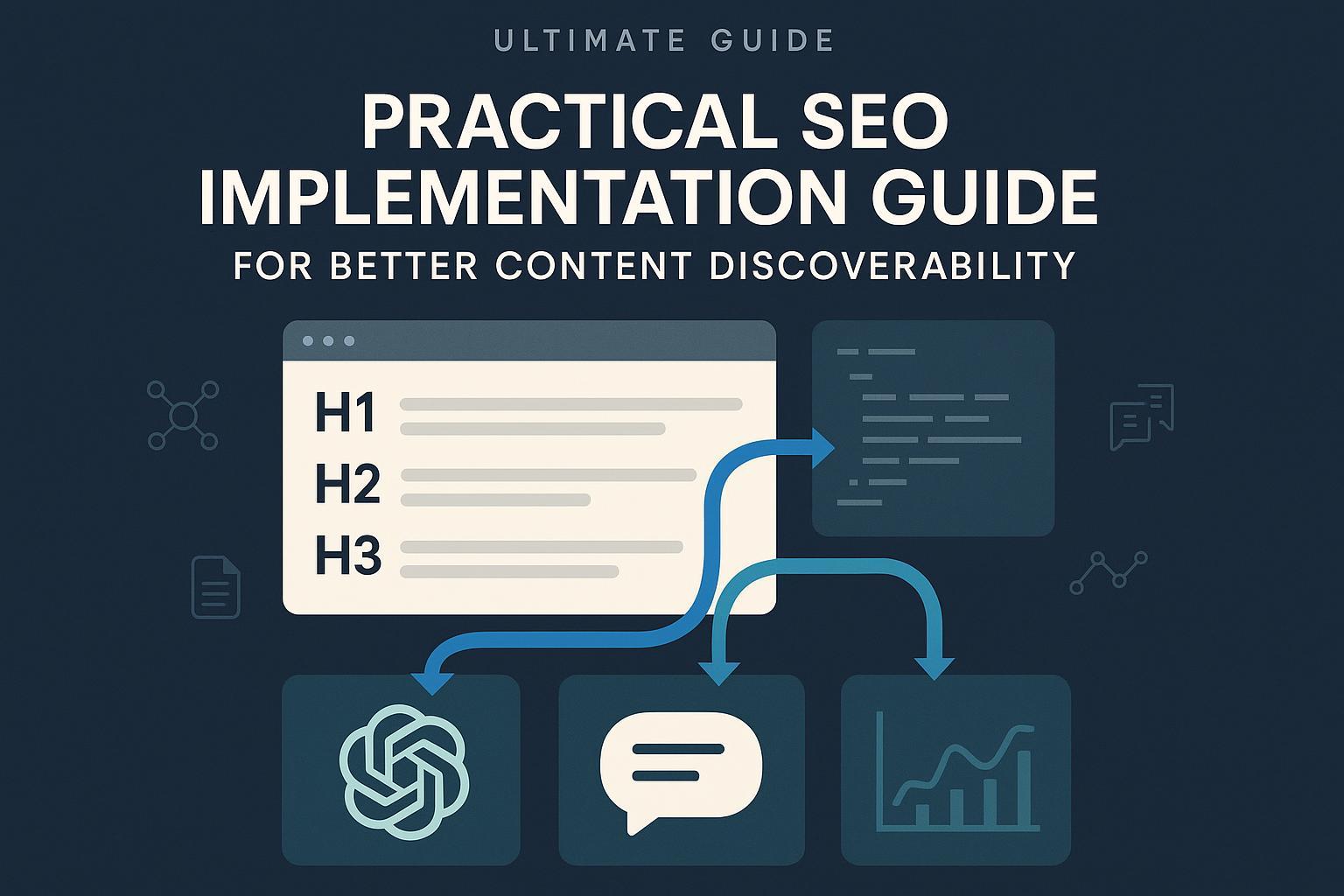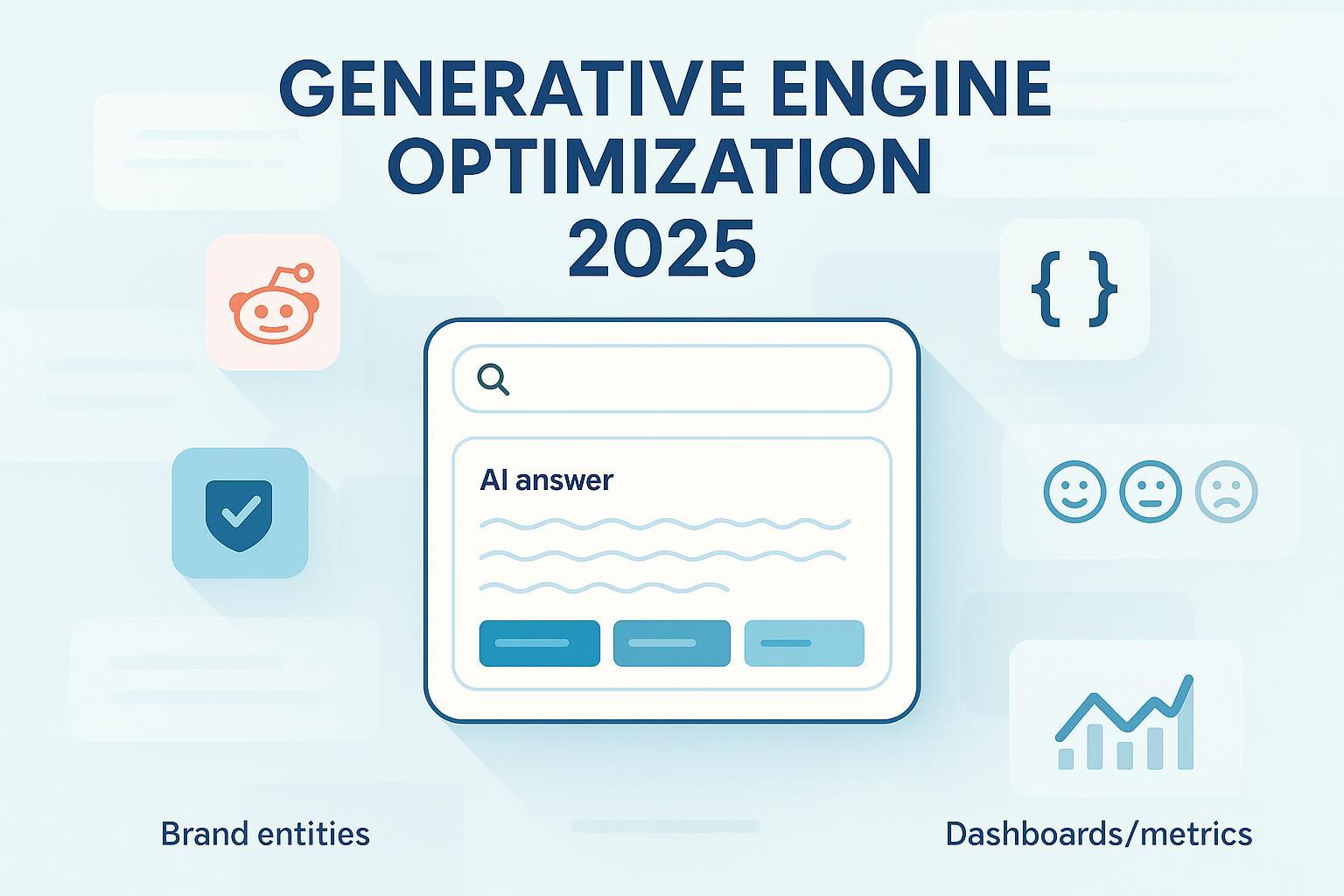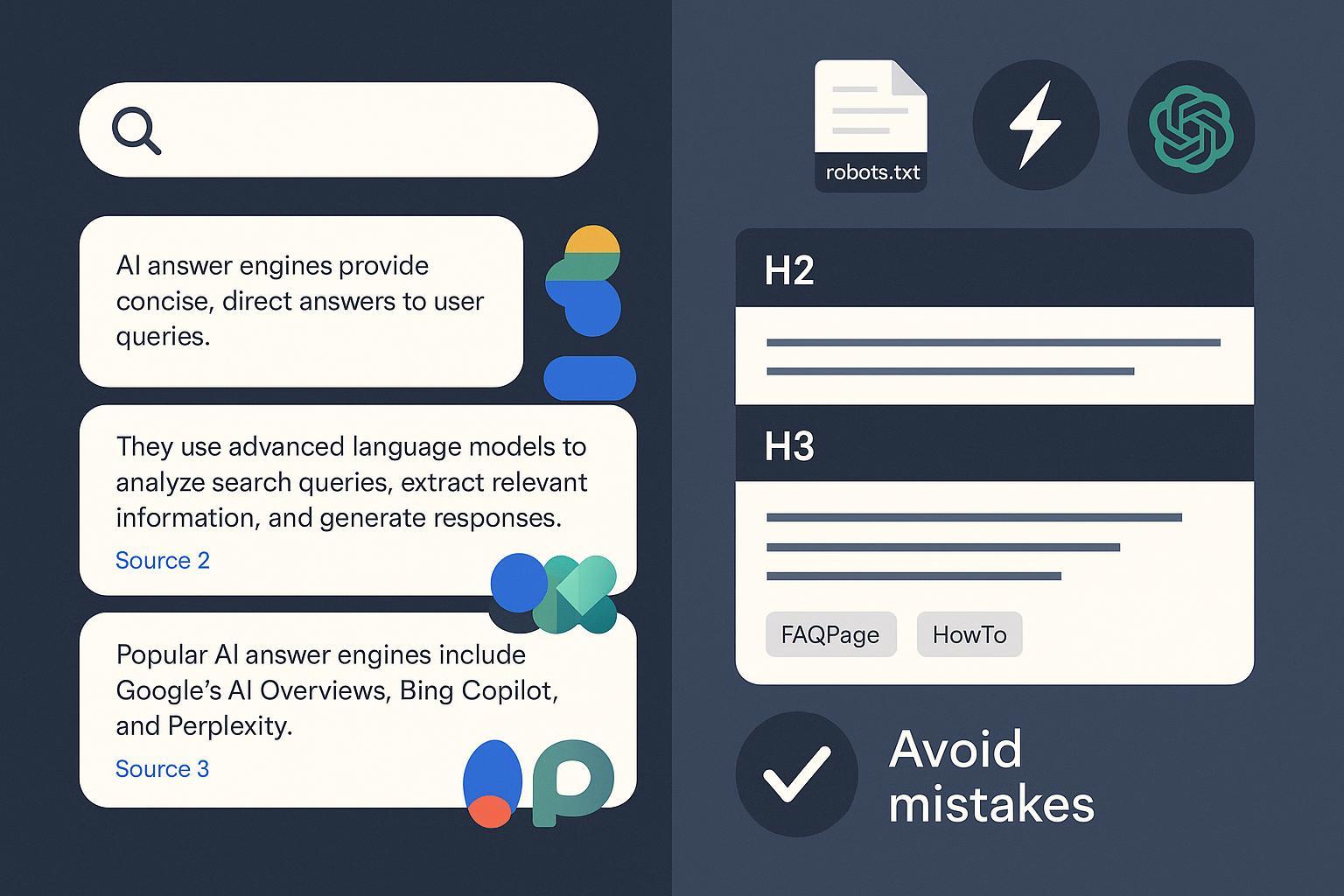Latest SEO Updates 2025: Action Plan for Bloggers & Rising AI Trends
Catch up on Google's 2025 SEO updates—core, spam, and AI Overview changes impacting traffic. See key data, expert advice, and must-do blogger fixes now!


Updated on: October 10, 2025
Change-log highlights
- June–July 2025 core update completed July 17 (see official timeline below).
- August–September 2025 spam update completed September 22.
- Google simplified rich result support on June 12, 2025; ensure you’re using still-supported schema types.
- AI answer engines (Google AI Overviews/AI Mode, Bing Copilot, Perplexity) continue to expand visibility and absorb clicks on some queries.
If you felt whiplash this year, you’re not alone. 2025 brought two core updates and a broad spam update, plus expanding AI summaries that change how people click. This guide cuts through the noise with a blogger-focused plan: confirm what changed, diagnose traffic drops, fix quality and structure, and start measuring visibility beyond blue links.
1) What changed in 2025 (and why it matters)
Core and spam update timelines
- March 2025 core update: Google began on March 13 and completed March 27. See the official record in the Google Search Status Dashboard — March 2025 core update.
- June–July 2025 core update: Began June 30 and completed July 17; confirmed on the Google Search Status Dashboard — June 2025 core update.
- August–September 2025 spam update: A global update completed September 22; details on the Google Search Status Dashboard — August 2025 spam update.
Structured data support changes
- On June 12, 2025, Google announced it was “simplifying the search results page,” removing or deprecating certain rich result types while continuing support for common publisher types (like Article/BlogPosting, FAQPage, and HowTo). See the announcement in Google’s 2025 post, “Simplifying the search results page”.
Why this matters for bloggers
- Quality tightening: Core updates continue to reward firsthand experience, original insight, and clean sourcing while reducing visibility for thin, overlapping, or scaled low-value content.
- Enforcement against abuse: The 2025 spam update reiterates penalties for site reputation abuse, scaled content abuse, and expired-domain manipulation.
- Machine legibility: Supported structured data still helps search understand and present your content; parity with on-page content remains critical.
- Shift in clicks: AI answer engines surface summaries with limited citations, changing CTR patterns even when your rankings haven’t moved.
2) Diagnose your traffic drop (core vs. spam vs. AI answers)
Start with a timeline
- Annotate performance in Google Search Console and analytics against the three windows above (Mar 13–27, Jun 30–Jul 17, Aug 26–Sep 22). Sudden inflections that align with those ranges often indicate algorithmic impact.
Separate algorithmic movement from AI summary cannibalization
- Rankings down, CTR stable: You likely lost positions due to core/spam impacts.
- Impressions up, clicks flat/down: Your content still appears, but AI summaries may be siphoning clicks.
- Query segmentation: Compare branded vs. non-branded; YMYL vs. non-YMYL; and topics that frequently trigger AI summaries.
Cross-check with AI summary impact studies
- In April 2025, Amsive reported a CTR decline averaging 15.5% when AI Overviews appeared across a 700,000-keyword sample, with non‑branded queries down nearly 20% and sharper drops when a Featured Snippet also appeared; see the methodology and breakdown in the Amsive 2025 AI Overviews CTR study.
- In July 2025, the Pew Research Center found that users who saw an AI summary were less likely to click to external sites than those who didn’t see one; read the details in Pew Research Center’s 2025 analysis on AI summaries and link clicks.
Takeaway: Align your diagnostics to dates and query types, and expect CTR variability where AI summaries appear—even when rankings hold.
3) Strengthen content quality and visible expertise (E‑E‑A‑T)
Quick wins you can implement this week
- Consolidate thin or overlapping posts into comprehensive, experience-driven resources. Add firsthand details: original photos, testing notes, receipts, and logs.
- Clarify authorship: Add author bios with relevant experience and credentials. Maintain consistent bylines and link out to author profiles.
- Show your work: If you include data, describe the time window and source selection. Cite the original sources.
- Tighten intros and summaries: Offer a crisp, factual answer up top, then expand for depth.
Governance and reputation hygiene
- Review third‑party or hosted content for topical alignment and editorial oversight. Noindex or remove unrelated content placements.
- Audit for link schemes and doorway patterns; avoid expired-domain content that doesn’t add unique value.
4) Structured data and UX parity: do the basics right
Keep what’s supported and mirror the page
- Implement Article/BlogPosting, FAQPage, and HowTo where appropriate, ensuring properties match what’s visibly on the page.
- Validate regularly with Google’s Rich Results Test.
Improve satisfaction signals that correlate with quality
- Page speed and mobile rendering: reduce unused scripts, optimize images, and defer non-critical elements.
- Reader-first layout: limit intrusive ads, ensure clear headings, and include a succinct “answer box” near the top.
5) Practical example: build your AI citation log (multi‑engine)
To understand whether AI answer engines select and cite your posts, create a repeatable logging workflow across Google AI Overviews/AI Mode, Bing Copilot, and Perplexity.
- Tooling option: Use Geneo to track citation instances, source links, and sentiment over time across AI answers. Disclosure: Geneo is our product.
- What to capture: query phrasing, engine/mode, date/time, whether your domain is cited, link position, the surrounding summary text, and sentiment.
- Illustrative example: See a structured query report format in this AI visibility log for regulations topics: GDPR fines 2025 prompt report. Use it as inspiration for your own tracking fields and cadence.
How to use the log
- Correlate spikes/dips in AI citations with impressions and click trends per topic.
- Identify phrasing patterns where you’re cited and replicate those definitions/phrases across related posts.
- Note content elements frequently lifted (definitions, checklists, charts) and standardize them across your templates.
6) Optimize for answer engines without losing your soul
Give AI systems something precise to cite
- Include concise definitions, bullet checklists, process steps, and original charts near the top of relevant posts.
- Use consistent terminology and add visible source lines for facts or stats.
Reinforce topical authority
- Interlink from related posts to a clear cornerstone page for each topic cluster.
- Align headings and on-page structure with how people ask: include common phrasing and synonyms naturally.
Further reading for tactics
- For a hands-on playbook that blends community signals and citation patterns, explore this guide on Reddit communities and AI search citations best practices.
7) Metrics to watch in 2025
- AI citation presence and frequency: by engine and by topic cluster.
- Impressions → clicks gap: especially on queries that trigger AI summaries.
- Branded vs. non-branded share: track whether brand demand offsets non-branded CTR loss.
- Engagement on-page: scroll depth, time on task, helpfulness survey ratings.
- Author/entity visibility: percentage of posts with complete bylines and Person/Organization schema aligned to real bios.
8) A prioritized action plan for bloggers
Week 1: Diagnose and stabilize
- Annotate analytics and GSC with March, June/July, and Aug/Sept windows; segment by topic and query type.
- Identify pages hit during those windows; sort by traffic value and recovery potential.
- Stand up your AI citation logging workflow (manual or with a tool) and start tracking core topics.
Week 2–3: Rebuild quality signals 4) Merge or retire thin/overlapping content; add firsthand elements and clear sourcing. 5) Implement/validate supported schema; fix parity issues; streamline page speed and layout. 6) Add concise “answer boxes” with definitions or checklists to key posts.
Week 4 and ongoing: Iterate and measure beyond blue links 7) Track AI citation trends alongside impressions and clicks; refine phrasing and structure where citations appear. 8) Strengthen cornerstones and internal linking within each topic cluster. 9) Review hosted/third‑party content for reputation risk and remove misaligned pages.
Final word (and what to expect next)
Expect continued documentation tweaks and possibly more testing throughout Q4. Keep your eyes on the Status Dashboard for any new incidents, validate schema parity, and shift your measurement mindset from pure rankings to being selected (and cited) inside AI answers. If you need a lightweight way to monitor AI citations and sentiment across engines, consider Geneo.
References mentioned in this article
- Google status incidents (2025): March core, June core, August spam (linked above once each).
- Google structured data update (June 12, 2025): Simplifying the search results page (linked above once).
- AI summary impact studies: Amsive (April 2025) and Pew Research Center (July 2025) (linked above once).




